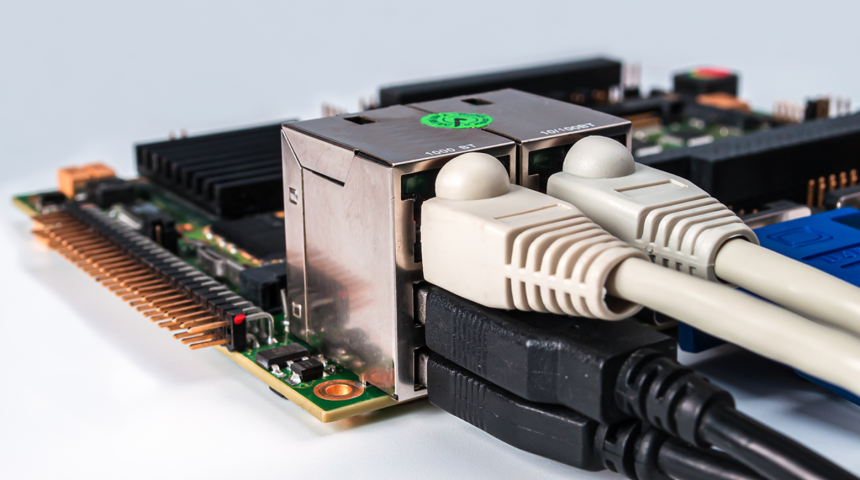Embedded systems play a huge role in consumer electronics today. Almost every electronic device we use contains one or more embedded systems that perform important functions behind the scenes without the user’s direct interaction. These tiny computers are found in smartphones, tablets, smart home devices, gaming consoles, wearables and more. They control key components and enable core functionality. In this blog, we will discuss in detail the various ways in which embedded systems have significantly influenced and advanced modern consumer electronics. The embedded solutionallow devices to be smarter, more connected and more powerful than ever before. By having specialized computer processors embedded within electronics, manufacturers can build devices with highly customized and integrated experiences for consumers.
- What are embedded systems?
- Role of embedded systems in consumer devices
- Impact on smartphones
- Influence on home appliances
- Role in automotive industry
- Impact on consumer electronics
- Influence on entertainment devices
- Benefits for industrial equipment
- Role in medical devices
- Impact on IoT revolution
- Conclusion
What are embedded systems?
Embedded systems are specialized computer systems that are designed to perform dedicated functions within larger mechanical or electrical systems. They contain a microprocessor or microcontroller along with memory and input/output components which allow them to perform computational tasks. However, unlike general purpose computers, embedded systems have their hardware configuration fixed for a specific role without expandability.
The embedded software burned into the device’s read-only memory is also customized for the dedicated functions of that system. Common examples of embedded systems include controllers in home appliances that manage various operations, engine control units in vehicles that monitor sensor data and control engine performance, and single-board computers embedded in machines for industrial automation purposes. Embedded systems are optimized to run their dedicated real-time applications with low power usage and high reliability within the target environment for long periods of time.
Role of embedded systems in consumer devices
Embedded systems allow consumer electronic devices to have advanced features and functionalities that users have come to expect. They control various internal components and processes within devices, from simple home appliances to sophisticated smartphones and laptops. Without embedded systems, these devices would not be able to perform complex tasks, interactions and computations in real-time. Embedded systems enable devices to connect to wireless networks and the internet, process user inputs, store and retrieve large amounts of data locally and in the cloud, run sophisticated applications, and integrate diverse components into seamless experiences. Embedded processors embedded within electronics have transformed consumer products into smart, connected devices that can continuously learn and improve. The role of embedded systems is increasingly important as internet-of-things devices proliferate in our homes and lives.
Impact on smartphones
Smartphones would not be possible in their current form without embedded systems. Powerful yet efficient embedded processors, memory chips, sensors and other components are integrated into smartphones to enable their advanced capabilities. Embedded systems in smartphones run the complex operating system, power demanding applications smoothly and connect to cellular networks and WiFi seamlessly. They provide the computing power behind key features like the high resolution touchscreen display, powerful cameras with advanced lenses and sensors, accurate GPS location services, Bluetooth connectivity and more. Advanced smartphones today contain multiple embedded systems like the application processor, baseband processor, graphics processing unit and more, all working seamlessly together in the background to deliver an integrated experience to users. Without embedded systems, smartphones would lack the intelligence and seamless connectivity that users have come to expect and rely on.
Influence on home appliances
Washing machines, refrigerators, air conditioners contain embedded systems that control their functions precisely. Embedded controllers allow appliances to offer customized cycles, monitor energy usage, connect to home networks and remote control. New smart appliances have more advanced embedded systems for AI capabilities, internet connectivity and personalization. This has improved convenience and efficiency.
Role in automotive industry
Modern vehicles are packed with dozens of embedded systems. Engine control units precisely manage fuel injection, ignition timing and other parameters for optimal performance. ABS, airbags and infotainment systems also rely on embedded solution company. Advanced driver-assistance systems use powerful embedded computers for autonomous driving features. The growing connectivity in cars is also enabled by embedded networking capabilities.
Impact on consumer electronics
Embedded systems have enabled new form factors and interactions in consumer electronics. Wearables like smartwatches became possible due to small low-power embedded boards. Voice assistants use embedded AI chips to understand speech. Drones and robots contain specialized embedded platforms for navigation, computer vision and motion control. Immersive technologies like VR/AR headsets leverage embedded graphics, sensors and wireless capabilities.
Influence on entertainment devices
Game consoles heavily rely on embedded systems for high-end 3D graphics, media playback and online multiplayer gaming. Streaming devices have embedded OS and apps to access digital media. Smart TVs contain multiple embedded boards for different functions like audio/video decoding, internet connectivity, UI rendering and more. Embedded DSP chips power surround sound in home theaters. This has enhanced the multimedia and entertainment experience.
Benefits for industrial equipment
Industrial machines use embedded controllers for automation, remote monitoring and predictive maintenance. Embedded vision systems enable quality inspection. Drones and robotics leverage embedded platforms for autonomous navigation, computer vision tasks and motion control. This has improved productivity, efficiency and safety in various industries like manufacturing, agriculture, logistics and more.
Role in medical devices
From diagnostic machines to surgical robots, embedded systems play a vital role in healthcare. They power medical imaging equipment, patient monitors, prosthetics and more. Implantable devices like pacemakers rely on ultra-low power embedded chips. The growing connectivity in healthcare leverages embedded networking. This has enabled remote patient monitoring and more affordable point-of-care diagnostics.
Impact on IoT revolution
The rise of IoT is driven by affordable low-power embedded boards that can sense, compute and connect. Devices from smart locks to industrial sensors contain embedded systems to interface with the physical world and internet. Embedded platforms allow for distributed intelligence at the edge in IoT applications. This has fueled new business models and use cases across various industries through connected devices and systems.
Conclusion
Embedded systems have transformed consumer electronics and influenced the daily lives in many ways. Their small size and specialized nature have allowed new form factors and functionalities in devices. The convergence of embedded hardware, software and connectivity is a key enabler of the digital revolution. As embedded technologies for pcb design service continue to advance further, we can expect even more innovative products and experiences powered by embedded systems in the future.














